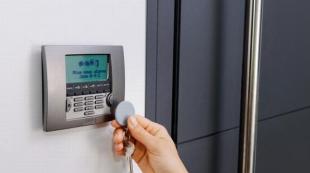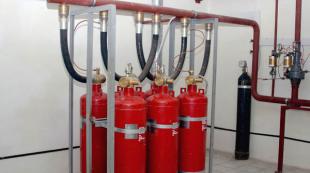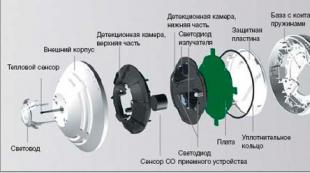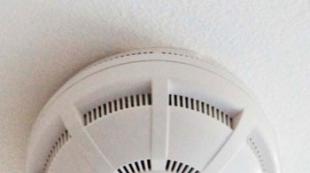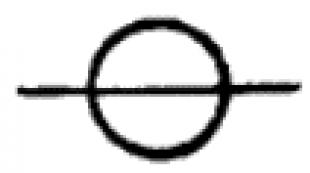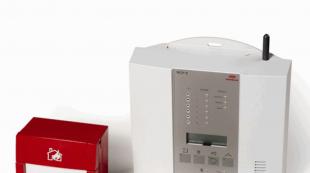Maintenance work on alarm. Current regulations for the maintenance of ops
STATES FOR MAINTENANCE OF AUPS AND SOUE INSTALLATIONS
Systems fire protection and integrated security are categorizedcomplex operational equipment affectingon the safety of people and material values, therefore it is necessary to produce regularmaintenance startingimmediately after commissioning. Maintenance must be carried out by an organization withcorresponding license. When operating the system, it is necessary to develop instructions for the interaction of technical personnel and security services.
Maintenance is carried out under an agreement in accordance with RD009-01-96, routine maintenance, additional work, the frequency of which is established by agreement between the Contractor and the Customer, depending on the condition, conditions and life of technical equipment and systems. To perform maintenance work and scheduled maintenance of the facility’s OPS installations, according to the calculation made according to the methodology described in RTM 25 488-82, one person from the number of OPS monitors not less than 5th category is required.
REGULAR WORKS
Scheduled maintenance work for scheduled preventive maintenance (MOT and PPR) of all systems should be carried out in accordance with the annual schedule, drawn up taking into account the documentation of the manufacturers and the timing of the repair work, by a licensed specialized organization under the contract.
The standards for the number of personnel take into account the performance of maintenance work and scheduled maintenance of the system.
Auto Maintenance System fire alarm carried out to the extent specified by technical documentation. System performance check is carried out in
Maintenance of the automatic fire alarm system is carried out to the extent determined by the technical documentation. The system performance check is carried out in accordance with applicable regulatory documents and is confirmed by acts.
The main purpose of maintenance is the implementation of measures aimed at maintaining the APS in a state of readiness for use, the prevention of malfunctions and premature failure of component devices and elements.
The structure of maintenance and repair includes the following types of work:
Maintenance
Scheduled Maintenance
Scheduled major repairs
Unscheduled repairs
This includes monitoring the planned operation of the APS, eliminating detected defects, adjusting, adjusting, testing and checking.
The scope of the current repair includes partial disassembly, replacement or repair of wires and cable structures. Measurements and tests of equipment and elimination of detected defects are carried out.
The scope of overhaul, in addition to the work stipulated by the current repair, includes the replacement of worn-out APS elements and improving the operational capabilities of equipment.
Unscheduled repairs are carried out in the scope of routine or major repairs and are carried out after a fire, accident, caused by unsatisfactory operation of the equipment or to prevent it.
When carrying out maintenance work, one should be guided by the requirements of the operating instructions of the manufacturers, the current governing and regulatory documents.
Typical regulations for maintenance of APS and SOUE:
|
List of works |
Periodicity |
|
1. External inspection of the components of the installation: control panel, sirens, detectors, alarm loops for mechanical damage, corrosion, dirt, fastening strength, etc. |
Weekly |
|
2. Monitoring the operating position of the switches and switches, serviceability of the light indication, the presence of seals and warranty labels on the devices. |
Weekly |
|
3. Monitoring the main and backup power sources and checking the automatic switching of power from the main input to the backup. |
Monthly |
|
4. Checking the operability of the components of the installation (main devices and elements, sirens, detectors, measuring the parameters of alarm loops, etc.) |
Monthly |
|
5. Preventive work, including visual inspection of the status of fire detectors, removal of dust, dirt, etc. |
Monthly |
|
6. Verification of the operability of the installation as a whole (comprehensive verification). |
Monthly |
|
7. Metrological verification of instrumentation |
Annually |
|
8. Measurement of resistance of protective and working grounding |
Annually |
|
9. measuring the resistance of electrical circuits. |
1 time in 3 years |
|
10. Replacing the batteries in uninterruptible power supplies |
1 time in 5 years |
Code of practice in the field fire safety
Code of Practice 1.13130.2009 "Fire Protection Systems EVACUATION WAYS AND OUTPUTS"
MINISTRY OF THE RUSSIAN FEDERATION FOR CIVIL DEFENSE, EMERGENCY SITUATIONS AND ELIMINATION OF CONSEQUENCES OF NATURAL DISASTERS RULE 1.13130.2009 Fire protection systems EVACUATION ...
Code of Practice 2.13130.2009 "Fire Protection Systems. FIRE RESISTANCE OF PROTECTIVE OBJECTS"
MINISTRY OF THE RUSSIAN FEDERATION FOR CIVIL DEFENSE CASES, EMERGENCY SITUATIONS AND ELIMINATION OF CONSEQUENCES OF NATURAL DISASTERS CONSIDERATION OF RULES 2.13130.2009 Fire protection systems ...
Code of Practice 3.13130.2009 "Fire protection systems. ALARM AND MANAGEMENT SYSTEM FOR PEOPLE EVACUATION AT FIRE. Fire safety requirements"
MINISTRY OF THE RUSSIAN FEDERATION FOR CIVIL DEFENSE CASES, EMERGENCY SITUATIONS AND ELIMINATION OF CONSEQUENCES OF NATURAL DISASTERS RULES 3.13130.2009 Fire protection systems SYSTEM ...
Code of Practice 4.13130.2009 "Fire protection systems. LIMITATION OF FIRE DISTRIBUTION AT PROTECTIVE OBJECTS. Requirements for space-planning and design solutions."
MINISTRY OF THE RUSSIAN FEDERATION FOR CIVIL DEFENSE CASES, EMERGENCY SITUATIONS AND ELIMINATION OF CONSEQUENCES OF NATURAL DISASTERS RULES 4.13130.2009 Fire protection systems LIMITATION ...
Code of Practice 5.13130.2009 "Fire protection systems. FIRE ALARM AND FIRE FIGHTING INSTALLATIONS AUTOMATIC. Standards and design rules."
MINISTRY OF THE RUSSIAN FEDERATION FOR CIVIL DEFENSE, EMERGENCY SITUATIONS AND ELIMINATION OF CONSEQUENCES OF NATURAL DISASTERS CONCEPT OF RULES SP 5.13130.2009 Fire protection systems INSTALLATIONS ...
Code of Practice 6.13130.2009 "Fire protection systems. ELECTRICAL EQUIPMENT Fire safety requirements."
MINISTRY OF THE RUSSIAN FEDERATION FOR CIVIL DEFENSE CASES, EMERGENCY SITUATIONS AND ELIMINATION OF CONSEQUENCES OF NATURAL DISASTERS RULES 6.13130.2009 Fire protection systems ELECTRICAL EQUIPMENT ...
Code of Practice 7.13130.2009 "HEATING, VENTILATION AND AIR CONDITIONING. Fire-prevention requirements."
MINISTRY OF THE RUSSIAN FEDERATION FOR CIVIL DEFENSE CASES, EMERGENCY SITUATIONS AND ELIMINATION OF CONSEQUENCES OF NATURAL DISASTERS CORE Regulation 7.13130.2009 HEATING, VENTILATION AND AIR CONDITIONING Fire ...
Code of Practice 8.13130.2009 "Fire protection systems. SOURCES OF EXTERNAL FIRE-FIGHTING WATER SUPPLY. Fire safety requirements"
MINISTRY OF THE RUSSIAN FEDERATION FOR CIVIL DEFENSE AFFAIRS, EMERGENCY SITUATIONS AND ELIMINATION OF CONSEQUENCES OF NATURAL DISASTERS CONCEPT rules 8.13130.2009 Fire protection systems SOURCES ...
Code of Practice 9.13130.2009 "Fire-fighting equipment. FIRE EXTINGUISHERS . Operational Requirements "
MINISTRY OF THE RUSSIAN FEDERATION FOR CIVIL DEFENSE AFFAIRS, EMERGENCY SITUATIONS AND ELIMINATION OF CONSEQUENCES OF NATURAL DISASTERS Rule 9.13130.2009 Fire fighting equipment FIRE EXTINGUISHERS Requirements ...
Code of Practice 10.13130.2009 "Fire protection systems. INTERNAL FIRE-FIGHTING WATER PIPE. Fire safety requirements."
MINISTRY OF THE RUSSIAN FEDERATION FOR CIVIL DEFENSE CASES, EMERGENCY SITUATIONS AND ELIMINATION OF CONSEQUENCES OF NATURAL DISASTERS CONCERNED 10.13130.2009 FIRE-FIGHTING SYSTEMS INTERNAL ...
Set of rules 11.13130.2009 "PLACES OF DISLOCATION OF FIRE PROTECTION DEPARTMENTS. Procedure and methodology for determining."
MINISTRY OF THE RUSSIAN FEDERATION FOR CIVIL DEFENSE AFFAIRS, EMERGENCY SITUATIONS AND ELIMINATION OF CONSEQUENCES OF NATURAL DISASTERS RULES 11.13130.2009 PLACES OF DISLOCATION OF FIRE DIVISIONS ...
Code of Practice 12.13130.2009 "DEFINITION OF CATEGORIES OF ROOMS, BUILDINGS AND OUTDOOR INSTALLATIONS ON EXPLOSION AND FIRE HAZARD. Official publication."
MINISTRY OF THE RUSSIAN FEDERATION FOR CIVIL DEFENSE, EMERGENCY SITUATIONS AND ELIMINATION OF CONSEQUENCES OF NATURAL DISASTERS RULES 12.13130.2009 DETERMINATION OF CATEGORIES OF PREMISES ...
There are approved JV TECHNIQUES FIRE AUTOMATIC INSTALLATIONS OF FIRE ALARMS AND FIRE FIGHTING
REQUIREMENTS FOR INSTALLATION AND OPERATION ???
The fire alarm maintenance schedule is a guarantee of maintaining the system in working condition. The fire alarm system is a complex system consisting of many different devices that connect line devices, control points that interact with complex circuits. Serviceability of the system is the main factor determining its reliability. It can save a person’s life and health, keep personal property intact in conditions of use in civil buildings, and preserve integrity industrial equipment in industrial premises. Fire alarm is the most important component of security. That is why you need to understand why you need a regulation for servicing fire alarm systems.
Working condition fire system alarm depends on its technical condition. Public places or production halls are characterized by difficult operating conditions. A constant change in the microclimate, temperature regime, exposure to moisture and dust, random mechanical influences can cause various malfunctions in the system or lead to its complete inoperability.
Prevalence of system use fire safety, and special requirements for its operation have led to the emergence of mandatory preventive measures. The fire alarm service regulations indicate which work is necessary, should be regular and mandatory, to prevent the occurrence of various malfunctions in the system.
Typical Fire Alarm Service Regulations: Basic Requirements
The basis for the preparation of the document are the basic regulations, instructions and laws. It contains a list of actions that need to be taken by a particular service working with a particular object or enterprise. Work begins with the preparation of a number of documents and the conclusion of contracts containing the conditions for the maintenance fire systems. The standard schedule for the maintenance of fire alarms contains a description of the complex of measures necessary to maintain safety. It indicates the organizations entitled to engage in such activities:
- organizations involved in the production of systems and individual device elements;
- organizations involved in installation and installation;
- organizations that have a certificate and a license to carry out work of this kind.
The maintenance schedule for fire alarm systems contains information on the required frequency of operations, by organizations whose forces should be used for maintenance, and a list of operations required to be performed. The work carried out established by the regulation should be recorded using a special journal.
Daily Fire Alarm Maintenance Schedule
Fire Alarm Service Regulation 1 specifies the types of work that should be performed daily. Daily work must be performed by maintenance services. These include inspecting the outside of all devices. This can be a peripheral sensor, a system that controls the transmission of data, a power system or a central control panel. Attention should be paid to mechanical damage, the condition of the appearance of the devices, the level of charge of the batteries providing emergency power.

The fire alarm maintenance regulation of the RD also provides for daily verification of each seal, switch, circuit breaker, and operation of light indicators. Check the signs pointing to the emergency fire doors and gates. For third-party organizations involved in the provision of maintenance in accordance with the concluded contract, the deadline for performing the above actions is different. The minimum period is weekly.
Weekly Fire Alarm Maintenance Schedule
Fire Alarm Service Regulation 2 contains information on activities that should be carried out weekly. The operations indicated in the document must be carried out by the internal fire service or a special organization according to the concluded agreement. It is necessary to test the main and spare power systems once a week. Check how the mechanisms that switch electrical power sources work. The regulation indicates for weekly execution of work aimed at diagnosing the serviceability and ability to work of each sensor and device, the device that controls and transfers. Loudspeakers and warning devices should also be checked.
The fire alarm service regulation says that it is necessary to measure the parameters, to fix the serviceability of devices located in different areas of the facility. Checking the health of the system and its readiness for work is carried out through a variety of preventive maintenance. The frequency of their mandatory conduct is determined by the individual characteristics of a particular alarm. The minimum term is 1 time per quarter. Internal service should carry out preventive maintenance at least 1 time per month.
Schedule for maintenance of fire alarms of complex operations
To determine how effective the alarm is (normal or extreme conditions), technical regulations on the requirements for servicing a fire alarm involves a series of measurements and verification work by special organizations. They are aimed at determining the holistic operation of the system.
The first stage involves conducting test checks to determine the effectiveness of one or all standard modes. Automatic systems extinguishing is checked only by test mode.
The second stage obliges the company to check all the instruments and devices subject to verification by the metrological method. Every year, at least 1 time, it is necessary to measure the total resistance of the circuit responsible for grounding. Subject to verification are power circuits that conduct current, as well as a signal loop. The document provides for the measurement of insulation parameters every few years (maximum - 3 years).
Many extraneous factors can cause system malfunctions. This may be excessive dust inside the detector, or intentional harm. Failures in individual elements lead to a decrease in the functionality and overall performance of the system as a whole, or to a complete failure of the system.
Correct uninterrupted operation of the fire safety system is ensured by regular and competent maintenance. Only a well-functioning system can ensure the safety of people's lives and the preservation of state or personal property. Therefore, only a licensed and certified organization can carry out maintenance. A faulty system can kill many people. Therefore, it needs constant performance checks, regulated by a special document. Failure to comply with these rules entails criminal liability.
